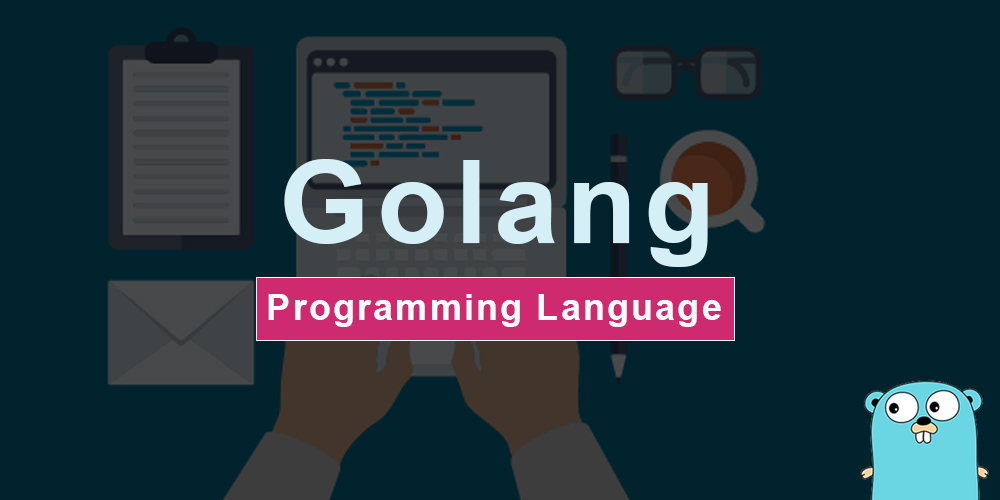Go Programming Language: Explained Simply!
Whenever a new programming language comes around in software engineering it is generally born out of a specific necessity. For instance, when Python was first announced in 1989 it was aimed at code readability and clean programming. Languages like Java came around in 1995 to bring ease of use, writing, compiling and debugging. So when Google engineers Robert Griesemer, Rob Pike and Ken Thompson and announced Go Programming Language publicly in 2009 they were also looking to solve certain challenges of the existing Computer languages. Of the many features that it demonstrated (we will get to those soon enough) it was also helpful in addressing the strange dilemma of hardware and software that was emerging.
At the center of this dilemma was Moore's Prediction. Intel co-founder Gordon Moore had predicted in 1965 that transistors were shrinking so fast that every year twice as many could fit onto a chip. In 1975 he revised the pace to doubling every two years. The implication was that to make computers faster the chips were getting smaller and smaller with double the transistors on the chips every two years. When the chips started getting nano-sized manufacturers also started adding more number of cores to the processor. In fact Intel introduced the concept of hyper-threading in 2002 to its processors so that they were able to perform multiple tasks at once. Further Cache sizes were getting bigger to improve performance. However, these hardware improvements to processing power have certain limitations which are:
-
It is only a matter of time beyond which it will be difficult compress chip sizes. That apart building these chips is also very expensive.
-
Cache addition is also not a suitable option as it has physical limitations and it slows down the processor.
-
Adding multiple cores have limitations in terms of scalability and costs. Further multithreading processors require concurrent applications.

Of all these challenges the first two are due to physical limitation. Only the later challenge can be solved through software improvements. Thus it is now evident that the software we develop and the programming languages should support concurrency easily and they should be scalable as the number of cores increase.
So, there we have it; Google’s Golang was designed specifically to support concurrency and scalability as this had become a requirement for all modern computing needs. The languages that came before multi-core processors were never really prepared to handle the requirements of multi-threading that multi-core processors performed. That said, let's now move on to explain some important features of Go programming Language which help meet modern computational requirements:
Multithreading
Go has lightweight threads that execute asynchronously thus handling multithreading in Golang. However, it is the channels that allow safe communication between the threads. These channels make the order of execution controllable in race conditions thus making the code run as fast as possible while also ensuring that it executes safely. The way in which Golang handles multithreading brings in concurrency allowing for faster performance.
Language Design
Go programming language is easy to understand and readable. It minimizes dependencies of code. For instance, Golang doesn't have Classes, Constructor, Inheritance, Generics and Exception. As a result, dependency management is good due to its object-oriented support. Further Data structures in Golang such as slice and struct provide a convenient way of storing elements. This makes it easier for developers to create neat code which is easy to create and most importantly easy to maintain with short compile time.
Package Management
Golang Package Management allows developers to utilize the functionality of other files. This removes the requirement of adding header files to every program. It also facilitates Remote Package Management . Improved Package Management provides improved features of the application.
Powerful standard library
Go’s powerful Standard library has been segmented into packages. These packages provide a wide range of functions. Some of these packages are Compression Packages, String related packages, collection packages, graphics packages, Mathematics packages and even miscellaneous packages. This kind of library support helps developers to quickly compile functionality rich applications.
Static Typing
It is an open source programming language which is statically typed and explicit. However, though it is statically typed its syntax follows patterns which are similar to those of Dynamic languages. As a result, Golang combines hardware efficiency with software efficiency. Thus Go programs implement functionality with less machine code while ensuring that written code executes as quickly as possible.
Testing Support
Go has inbuilt testing support. It allows programmers to test parallelly with writing code. Further, package testing provides allows automated testing for Go packages. This is used along with the “go test” command, which automates the execution of any function of the form. Go language also features automated garbage collector. Such testing and garbage collection help build error-free and bug-free applications that perform optimally at the client end.
Platform Independent
Go supports platform independence. Its code is compiled and converted to binary form right away such that it is so small that it does not require any dependency. Such source code can be compiled on any operating system, platform, server or application. This brings about cost efficiency for the client.
We hope this helped you get an overview of Go Programming Language in a very simple form. At Gowitek we love to hear from our viewers. Drop your email id below and we shall get back to you soon.